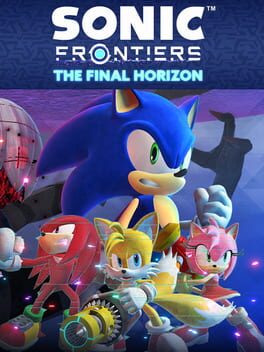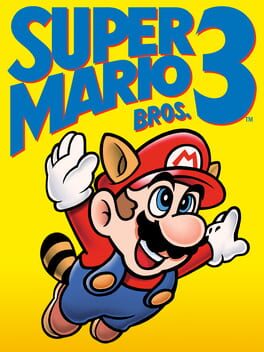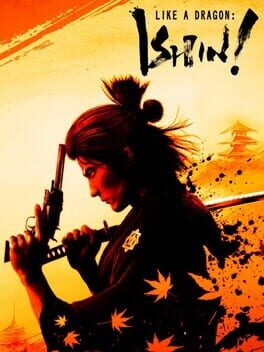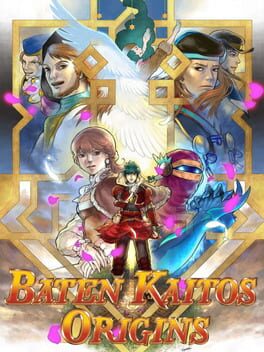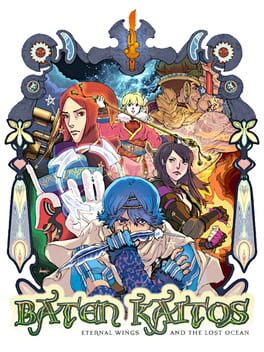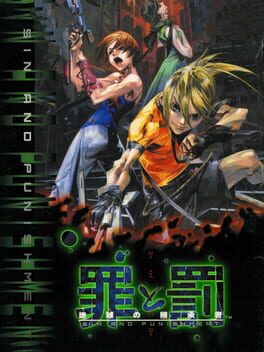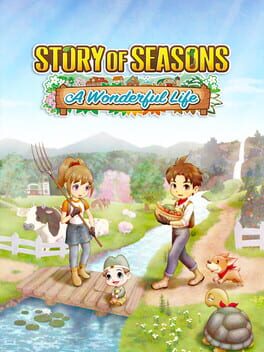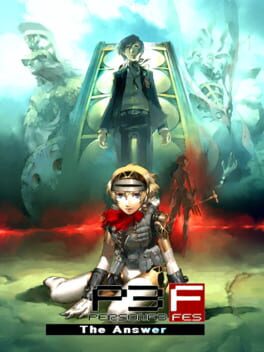ULF
After initally ranking this not-so-beloved dlc with a 1 star I was determined to leave it for dust forever.
I was not ready for Frontier's lenience and comfort gameplay succumbing to Final Horizon's feet.
But then my inner hedgehog one day told me to suck it up and just do it to it. And so I experienced the true package of what Sega offered to us Frontier fans for free! Insanity sprinkled on a silver platter.
A 3D Sonic completely bonkers with platform sections, trials, challenges and more that will require you to raise your fists in belief that you will succeed as you fall down to the pits of hell and have to crawl all the way back up again.
Look, Horizon is in contrast to Frontier not a resort sandbox, it requires you to A your game and demands your patience to collect shards for your characters to unlock the most basic of moves, but the way it is all implemented to the map makes exploring the island of Ourobos an actual rewarding incentive.
Horizon lets you play around quite liberally if you respect its early tresholds while on its flipside also being very exploitable when you know what boundaries to break and how. This is in reality the essence of what this package is about.
There are rough spots with wonky collision detection and a couple questionable character windups for Knuckles glide and stomp, Tails is utterly broken (in a good way!) once you get THAT ability and Amy is overall sonic with sick jumps. And to a dismay they don't get their own portal stages! We can take what we can, and mostly this feels moreso like a concept of what Sega might have on their cards for future entries, yet rough around the edges, but charming in the Sega way.
It is however cool having platform sections that requires you to do most of everything without the automation, and the spindash implemented to the portal stages make for some insanely fun jank. Yes, breaking through walls and going out of bounds sure is a thing, but my god..when you pull it off right you will feel like a true hedgehog.
As for the story itself, it is a short alternative arc that doesn't spend much time pulling over the gameplay , while it is still present through small banters perfectly painting the ordeal our main heroes are going through. Meanwhile, The final clash is an incredible payoff worth every moment spent to get there.
I really enjoyed the entirety of how the dlc wrapped itself up.
My heart definitely felt a little twang by the time the credits rolled.
So there it is. Would I say go play this?
Not to everyone. It is a rough and punishing experience, but who knows. It is a sonic game after all.
Just be ready to take some punches to the gut and you might find the pain worthwhile.
I was not ready for Frontier's lenience and comfort gameplay succumbing to Final Horizon's feet.
But then my inner hedgehog one day told me to suck it up and just do it to it. And so I experienced the true package of what Sega offered to us Frontier fans for free! Insanity sprinkled on a silver platter.
A 3D Sonic completely bonkers with platform sections, trials, challenges and more that will require you to raise your fists in belief that you will succeed as you fall down to the pits of hell and have to crawl all the way back up again.
Look, Horizon is in contrast to Frontier not a resort sandbox, it requires you to A your game and demands your patience to collect shards for your characters to unlock the most basic of moves, but the way it is all implemented to the map makes exploring the island of Ourobos an actual rewarding incentive.
Horizon lets you play around quite liberally if you respect its early tresholds while on its flipside also being very exploitable when you know what boundaries to break and how. This is in reality the essence of what this package is about.
There are rough spots with wonky collision detection and a couple questionable character windups for Knuckles glide and stomp, Tails is utterly broken (in a good way!) once you get THAT ability and Amy is overall sonic with sick jumps. And to a dismay they don't get their own portal stages! We can take what we can, and mostly this feels moreso like a concept of what Sega might have on their cards for future entries, yet rough around the edges, but charming in the Sega way.
It is however cool having platform sections that requires you to do most of everything without the automation, and the spindash implemented to the portal stages make for some insanely fun jank. Yes, breaking through walls and going out of bounds sure is a thing, but my god..when you pull it off right you will feel like a true hedgehog.
As for the story itself, it is a short alternative arc that doesn't spend much time pulling over the gameplay , while it is still present through small banters perfectly painting the ordeal our main heroes are going through. Meanwhile, The final clash is an incredible payoff worth every moment spent to get there.
I really enjoyed the entirety of how the dlc wrapped itself up.
My heart definitely felt a little twang by the time the credits rolled.
So there it is. Would I say go play this?
Not to everyone. It is a rough and punishing experience, but who knows. It is a sonic game after all.
Just be ready to take some punches to the gut and you might find the pain worthwhile.
1993
Man oh man...mario 3...the lord of vibes in its charm and tunes, mechanically sound with motions stirring nostalgic values that puts a jingle to my soul.
A wild and varied mario time with the right dose of challenge.
Levels veering from short to grand, perfectly highlighting in contrast what works and doesn't as slow autoscrollers and mazes strikes a pose to dull some glimmer of this platformers natural shine.
A wild and varied mario time with the right dose of challenge.
Levels veering from short to grand, perfectly highlighting in contrast what works and doesn't as slow autoscrollers and mazes strikes a pose to dull some glimmer of this platformers natural shine.
2023
You know when a game hits that expectation curve of following up on a game it really doesn't do.
That's this game.
With it's defect physics and cube terrains all gloriously wrapped in an disgustingly overpriced package of NEW Zones spontaneously dishing out the most creative gimmicks the series has seen in a very long time there is that unhinged Sega quality that simply puts a stupid grin on my face.
Yes, it's no mania, it's secretly sonic 4 episode 3 & Knuckles and balance is at last restored.
That's this game.
With it's defect physics and cube terrains all gloriously wrapped in an disgustingly overpriced package of NEW Zones spontaneously dishing out the most creative gimmicks the series has seen in a very long time there is that unhinged Sega quality that simply puts a stupid grin on my face.
Yes, it's no mania, it's secretly sonic 4 episode 3 & Knuckles and balance is at last restored.
Kyo is a lovely looking village hub filled with great substories and its own share of side activities.
Though you'll be sorely disappointed if you expect to find any Sega arcades, cabaret clubs, bowling or baseball centres.
The best thing about Ishin is the tale it weaves, as it spins the yakuza conventions back to the edo period twisting familiar characters from the series into new roles without any predictable boundaries to their roles and fates.
The combat system as well as the stuff you eventually unlock to tweak in both new abilities and temporary attribute boost is one of the better in the series.
Just spend one session in the barrack dungeon sidegame to loot and craft yourself one of the higher rarity swords, and sell the loot you don't need for money. Then the rest of the game should be a breeze.
Though you'll be sorely disappointed if you expect to find any Sega arcades, cabaret clubs, bowling or baseball centres.
The best thing about Ishin is the tale it weaves, as it spins the yakuza conventions back to the edo period twisting familiar characters from the series into new roles without any predictable boundaries to their roles and fates.
The combat system as well as the stuff you eventually unlock to tweak in both new abilities and temporary attribute boost is one of the better in the series.
Just spend one session in the barrack dungeon sidegame to loot and craft yourself one of the higher rarity swords, and sell the loot you don't need for money. Then the rest of the game should be a breeze.
2023
It's so cool this game finally got released in europe! Origins is a wonderful side companion and prequel to Eternal Wings that stands firm with its own story, while building more on the baten kaitos universe. The chemistry between the trio main characters as well as all the different characters you meet during the journey are very well done aided by solid script while the plot veers right to left with cool twists.
Stripping away some of the complexities of its brethren game, Origins sets its own rules and the right dosage of depth with a hectic, challenging and super flashy combat system, that requires you to always stay on your toes, even for normal encounters, but it's still always fair game veering on the sweetspot between just right and tough.
Magnus cards still have a presence blending deck managing for combat and collectable cards for puzzle-solving together with the standard jrpg formula. The cards adds flavour of novelty and innovation, but also not anything that is less intruding than whatever else you would use for gear optimising or menu items in any other jrpg.
While Origins has a strong narrative with inventive turns and twists, the plot takes its sweet time to get going in the earlier hours in addition to a few other segments where you're either forced to do fetch questing or talking to a multitude of random npcs to trigger the story, while this is a less occuring issue, it makes for an annoying presence the times it does.
Origins recycles a lot of assets and areas from Eternal Wings as they both share the same universe, While you don't get to see any new island aside from one, there are fun alterations and differences portraying the cultural growth and diminish 20 years prior to Eternal Wings.
What is fresh though are the neatly designed dungeons all having some sort of unique gimmick or majour puzzle setting them apart.
Thankfully the remaster of origins is mostly stable, occasionally staggering between 30-60 but it didn't get nearly as bad as Eternal Wings did. There is a weird Magnus card dupe exploit with the npc traders that I just happened to do involuntarily, other than that I didnt encounter any other oddities.
Like Eternal Wings, there are qol toggles for cheating through the game as well as increasing both battle and movement speed. But one of the more leasure adds is the ability to retry normal encounters instead of being sent to the game over screen.
While it is an absolute shame they didn't include the incredible english voiceovers, the japanese va is still super solid and at least to me didn't dismiss any of my favourite characters. Milly's english voice over has such a centric and near impossible performance to compete with, but I'm glad her japanese one was just as great in its own way. Guillo and Sagi are both just as wonderful too!
This game also has a new game - (hard, with tougher enemies and limited levelling) and + (memes) which i sometime look forward to hit.
Stripping away some of the complexities of its brethren game, Origins sets its own rules and the right dosage of depth with a hectic, challenging and super flashy combat system, that requires you to always stay on your toes, even for normal encounters, but it's still always fair game veering on the sweetspot between just right and tough.
Magnus cards still have a presence blending deck managing for combat and collectable cards for puzzle-solving together with the standard jrpg formula. The cards adds flavour of novelty and innovation, but also not anything that is less intruding than whatever else you would use for gear optimising or menu items in any other jrpg.
While Origins has a strong narrative with inventive turns and twists, the plot takes its sweet time to get going in the earlier hours in addition to a few other segments where you're either forced to do fetch questing or talking to a multitude of random npcs to trigger the story, while this is a less occuring issue, it makes for an annoying presence the times it does.
Origins recycles a lot of assets and areas from Eternal Wings as they both share the same universe, While you don't get to see any new island aside from one, there are fun alterations and differences portraying the cultural growth and diminish 20 years prior to Eternal Wings.
What is fresh though are the neatly designed dungeons all having some sort of unique gimmick or majour puzzle setting them apart.
Thankfully the remaster of origins is mostly stable, occasionally staggering between 30-60 but it didn't get nearly as bad as Eternal Wings did. There is a weird Magnus card dupe exploit with the npc traders that I just happened to do involuntarily, other than that I didnt encounter any other oddities.
Like Eternal Wings, there are qol toggles for cheating through the game as well as increasing both battle and movement speed. But one of the more leasure adds is the ability to retry normal encounters instead of being sent to the game over screen.
While it is an absolute shame they didn't include the incredible english voiceovers, the japanese va is still super solid and at least to me didn't dismiss any of my favourite characters. Milly's english voice over has such a centric and near impossible performance to compete with, but I'm glad her japanese one was just as great in its own way. Guillo and Sagi are both just as wonderful too!
This game also has a new game - (hard, with tougher enemies and limited levelling) and + (memes) which i sometime look forward to hit.
A good bullethell time with the classic control scheme of its predecessor or (recommended!) nunchuck+ wii mote aiming.
awesome and challenging bossfights bundled in stages mish mashed of 3D and 2D environments.
Unlike the first game you can move freely about in every direction, with enemies compensating for your flexibility with extra barrages of projectiles amongst some rather spongy enemies designed for you to use your charged shot, which takes a bit of time to get back.
You have your neutral shots, lock on feature with weaker bullets and a powerful close range attack whenever you hit the trigger at something close in proximity. As well as a convenient dodge roll. The controls are constantly busy, and using the ir aiming instead of right analog clears out a lot of the harder hand cordination which the classic control scheme moreso requires.
The charge shot adds a constant pressure of prioritising whether to use it against rows of lighter enemies vs the more spongy units, maintaining the stage and keeping mobs at bay while dodging bullets and hazards is the meat of the game and mostly the game works except for a few segments where the depth perception makes incoming projectiles and enemy spawns hard to keep in track. .
Bossfights are a-plenty and they all stand out with fun and challenging patterns of bullethells and hazards you'll need to adapt to while slowly curving down sizable HP bars with as many charge shots as you can muster outside of your weaker neutral artillery.
While differing from its predecessor with its new couple implementations it is a really fun arcady shooter that does well in its own right.
awesome and challenging bossfights bundled in stages mish mashed of 3D and 2D environments.
Unlike the first game you can move freely about in every direction, with enemies compensating for your flexibility with extra barrages of projectiles amongst some rather spongy enemies designed for you to use your charged shot, which takes a bit of time to get back.
You have your neutral shots, lock on feature with weaker bullets and a powerful close range attack whenever you hit the trigger at something close in proximity. As well as a convenient dodge roll. The controls are constantly busy, and using the ir aiming instead of right analog clears out a lot of the harder hand cordination which the classic control scheme moreso requires.
The charge shot adds a constant pressure of prioritising whether to use it against rows of lighter enemies vs the more spongy units, maintaining the stage and keeping mobs at bay while dodging bullets and hazards is the meat of the game and mostly the game works except for a few segments where the depth perception makes incoming projectiles and enemy spawns hard to keep in track. .
Bossfights are a-plenty and they all stand out with fun and challenging patterns of bullethells and hazards you'll need to adapt to while slowly curving down sizable HP bars with as many charge shots as you can muster outside of your weaker neutral artillery.
While differing from its predecessor with its new couple implementations it is a really fun arcady shooter that does well in its own right.
5 star game, but the remaster's performance leaves a bit to be desired. Erratic framerate jumping between 30-60 and at worst below. Some minour graphical bugs and input delays.
The new battle UI looks nice, but also a lil buggy (ailments icons not going away after recoverying) and the main menu for setting magnus cards, equipping etc looks awesome but has its share of unintuitive design choices. Instead of directly swapping cards in your deck you need to manually discard them to add new ones...and for equipping magnus you need to hotkey with the bumpers instead of having the option to select it on the main menu. It's just odd, but the hotkey implementation is quite nice when you get used to it.
The japanese va which is a big prop for this one and then there's the lack of the english..good news for your poor ear drums, and the alcoholic censorship has a lot of charm and creativity with their name alterings. I for one oh love me some of that wheat tea over a brand of beer..
The sound mixing is top notch and unlike the original the creatures all have their own death screams, as well as some environmental sound effects aren't as overly saturated/compressed as the original. By comparance the sound design is a large improvement.
There's also the extra toggles for no encounters, game speed adjustments in and out-battle which are nice for the impatient ones and for the later sidequesting. A instant kill toggle and finally an auto-battle function which is pure memes and doesn't work well at all.
Underneath it all it's the same beautiful game and you should play if want to try something unique in the jrpg genre. I want these games to be supported, but I'd recommend the original over this one unless you want the japanese cast and spot the differences from the original of which there are plenty minour ones.
Then again. The remasters also include new game plus with hard modes so I'll hold on to that for now.
The new battle UI looks nice, but also a lil buggy (ailments icons not going away after recoverying) and the main menu for setting magnus cards, equipping etc looks awesome but has its share of unintuitive design choices. Instead of directly swapping cards in your deck you need to manually discard them to add new ones...and for equipping magnus you need to hotkey with the bumpers instead of having the option to select it on the main menu. It's just odd, but the hotkey implementation is quite nice when you get used to it.
The japanese va which is a big prop for this one and then there's the lack of the english..good news for your poor ear drums, and the alcoholic censorship has a lot of charm and creativity with their name alterings. I for one oh love me some of that wheat tea over a brand of beer..
The sound mixing is top notch and unlike the original the creatures all have their own death screams, as well as some environmental sound effects aren't as overly saturated/compressed as the original. By comparance the sound design is a large improvement.
There's also the extra toggles for no encounters, game speed adjustments in and out-battle which are nice for the impatient ones and for the later sidequesting. A instant kill toggle and finally an auto-battle function which is pure memes and doesn't work well at all.
Underneath it all it's the same beautiful game and you should play if want to try something unique in the jrpg genre. I want these games to be supported, but I'd recommend the original over this one unless you want the japanese cast and spot the differences from the original of which there are plenty minour ones.
Then again. The remasters also include new game plus with hard modes so I'll hold on to that for now.
2021
Tales of Arise steps forward for the series with visual finesse visaged through grandeouse scale of environments and dungeons.
The Tales of series has for the last entries been aligning for new directions to modernise the formula, and while both Berseria and especially Zestiria had their merits and gripes Arise's standards is a huge distinction in comparance.
Staying faithful to both the new and old, Arise takes elements from its more traditional brethrens and converts them into its own defining battle system, while retaining the same style of easy 3D exploration as the two former entries in its series.
Both combat and exploration is as clean, flashy and intuitive as the UI for menuing and map navigating both through the story campaign and actual fun sidequests with a few easy fetch quests and otherwise mostly others presenting cool sub bosses and some neat extra dungeons.
From beginning to end Tales of Arise is a harmonic treat with a range of diversity and alignment between Motoi Sakuraba's orchestral pieces to his full on metal tracks. You get both of his good sides of calm and energetic wrapped into one package of consistently great compositions all the way through, it's simply some of his best work.
The story's biggest strength is as it usually is for the series its set of indepth characters bantering and developing their own individual arcs, the story itself is servicable and does build up for a lot of cool showdowns and set pieces, while a few mysteries lingers for some pretty out there revelations as it goes on, unfortunately at its tip end it does get a bit farfetched and hard to digest, it still carries itself out with nice individual arcs for all of the main characters.
Honestly 90 % of this game is just very difficult to put down, it's that damn good. It's too bad the end-game portion drops the ball with too much plot and repetitious dialogues crammed into a very flat and uninspired dungeon filled to the brim with sponge enemies, it is glaringly obvious the developers had to cram everything together on a dime due to some issue with the production. Regardless, the story itself is worthwile despite some jarry resolutions and the other 4/5 of the game is damn near perfect.
If namco follows the same production standards (totally ignoring the last portion of the game) as they did with this one, ooh boy...bring on the next big one soon please
The Tales of series has for the last entries been aligning for new directions to modernise the formula, and while both Berseria and especially Zestiria had their merits and gripes Arise's standards is a huge distinction in comparance.
Staying faithful to both the new and old, Arise takes elements from its more traditional brethrens and converts them into its own defining battle system, while retaining the same style of easy 3D exploration as the two former entries in its series.
Both combat and exploration is as clean, flashy and intuitive as the UI for menuing and map navigating both through the story campaign and actual fun sidequests with a few easy fetch quests and otherwise mostly others presenting cool sub bosses and some neat extra dungeons.
From beginning to end Tales of Arise is a harmonic treat with a range of diversity and alignment between Motoi Sakuraba's orchestral pieces to his full on metal tracks. You get both of his good sides of calm and energetic wrapped into one package of consistently great compositions all the way through, it's simply some of his best work.
The story's biggest strength is as it usually is for the series its set of indepth characters bantering and developing their own individual arcs, the story itself is servicable and does build up for a lot of cool showdowns and set pieces, while a few mysteries lingers for some pretty out there revelations as it goes on, unfortunately at its tip end it does get a bit farfetched and hard to digest, it still carries itself out with nice individual arcs for all of the main characters.
Honestly 90 % of this game is just very difficult to put down, it's that damn good. It's too bad the end-game portion drops the ball with too much plot and repetitious dialogues crammed into a very flat and uninspired dungeon filled to the brim with sponge enemies, it is glaringly obvious the developers had to cram everything together on a dime due to some issue with the production. Regardless, the story itself is worthwile despite some jarry resolutions and the other 4/5 of the game is damn near perfect.
If namco follows the same production standards (totally ignoring the last portion of the game) as they did with this one, ooh boy...bring on the next big one soon please
1998
2000
Super short, but also sweet and very replayable for upping up the ranking scores. A good arcade rush bullethell for the n64 along with its highly entertaining nonsensical cutscenes, cheese dialogues and headbopping stage tracks.
Controllers may take some time getting used to, but the training mode tells you all you need to know and gives you the leisure you need to ease into the mechanics.
Easy is a nice breeze with a generous handout for CREDITS to try again if you fudge it, while normal and hard are there for you to cry with stronger goons and bosses boasting more menacing attacks.
Controllers may take some time getting used to, but the training mode tells you all you need to know and gives you the leisure you need to ease into the mechanics.
Easy is a nice breeze with a generous handout for CREDITS to try again if you fudge it, while normal and hard are there for you to cry with stronger goons and bosses boasting more menacing attacks.
The original A Wonderful Life's mundanity and slower gameplay diverted it from the series other entries, but what it did succesfully was add for a relaxing experience bundled with a cozy little island wrapped around a neat dynamic weather system and beautiful lightning effects.
It certainly had its share of flaws in several aspects, some of the story chapters were too long ,
Festivals were scarce and not nearly as interesting as the rest of the series, and the characters, while cute and eerie, didn't do anything new past the first 2 chapters. The farm tools didn't offer much expanded flexibility other than the water can having more capacity and other tools spending less stamina.
Even still, I absolutely adore the original, and it has always been a game I get drawn back to when I need to dial out after a stressful event of any sort. It is very relaxing and therapeutic with its slow monotone nature and longwinded crop cultivation and dairy farming.
In comparison the remake is a faithful adaption with some of the same qualities, while also diversifying itself with its share of new nuances.
Story of Seasons: A Wonderful Life is slicker and shortens down the chapter spans to only one year, while drip feeding various content throughout the span of the game.
You get new facility expansions and faster tools to compensate the huger scope of what you need to do daily, and the game just gets a lot busier if you max out the capacity of the farm. Festivals are altered and boasts some different dialogues throughout the years, they are still just cutscenes, but the slight differences per year is a nice touch.
There are monthly requests from villagers to cultivate specific crops, or make dishes in return for rewards, some more interesting than others, but regardless it's a nice extra insentive to have more to do in the game which still may last for 100+ hours. There are plenty of costumes, gender change (non-binaries included) at your choosing whichever point in the game as well as a solid choice of both male and female bachelors to date.
The best thing about the remake is the new achievement system and a encyclopedia you can fill out as an extra challenge.
Even despite the fact that the remake makes the game more feasible to complete, the game still loses some significant steam in the later chapters due to nothing new really happening with the community aside from your kid and some npcs growing up slightly moreso cosmetically.
The remake has a plain, but pleasant look, with brushed up models more in line with story of season's current art style, while a couple of the characters are altered from their gamecube/ps2 counterparts, due to making some bachelors look more appealing and younger.
However, the gamecube versions completely conquers over the remake with its lightning effects and draw distance.
Running around the valley and watching the scenery change, while light and shadows gradually marked the landscape added so much to an otherwise very restricted environment.
Instead pop-ins and poorly rendered shadow effects recides over the remake and leaves the visual spectacle for dust.
Story of Season: A Wonderful life is very niche even for its own genre, but if I were to recommend one to the general player it would be the remake due to the improved pacing, extra content and more busy nature, even though personally I'd rather go wind down to the lush aestetics and slower mundane comfort grind of the original version.
It certainly had its share of flaws in several aspects, some of the story chapters were too long ,
Festivals were scarce and not nearly as interesting as the rest of the series, and the characters, while cute and eerie, didn't do anything new past the first 2 chapters. The farm tools didn't offer much expanded flexibility other than the water can having more capacity and other tools spending less stamina.
Even still, I absolutely adore the original, and it has always been a game I get drawn back to when I need to dial out after a stressful event of any sort. It is very relaxing and therapeutic with its slow monotone nature and longwinded crop cultivation and dairy farming.
In comparison the remake is a faithful adaption with some of the same qualities, while also diversifying itself with its share of new nuances.
Story of Seasons: A Wonderful Life is slicker and shortens down the chapter spans to only one year, while drip feeding various content throughout the span of the game.
You get new facility expansions and faster tools to compensate the huger scope of what you need to do daily, and the game just gets a lot busier if you max out the capacity of the farm. Festivals are altered and boasts some different dialogues throughout the years, they are still just cutscenes, but the slight differences per year is a nice touch.
There are monthly requests from villagers to cultivate specific crops, or make dishes in return for rewards, some more interesting than others, but regardless it's a nice extra insentive to have more to do in the game which still may last for 100+ hours. There are plenty of costumes, gender change (non-binaries included) at your choosing whichever point in the game as well as a solid choice of both male and female bachelors to date.
The best thing about the remake is the new achievement system and a encyclopedia you can fill out as an extra challenge.
Even despite the fact that the remake makes the game more feasible to complete, the game still loses some significant steam in the later chapters due to nothing new really happening with the community aside from your kid and some npcs growing up slightly moreso cosmetically.
The remake has a plain, but pleasant look, with brushed up models more in line with story of season's current art style, while a couple of the characters are altered from their gamecube/ps2 counterparts, due to making some bachelors look more appealing and younger.
However, the gamecube versions completely conquers over the remake with its lightning effects and draw distance.
Running around the valley and watching the scenery change, while light and shadows gradually marked the landscape added so much to an otherwise very restricted environment.
Instead pop-ins and poorly rendered shadow effects recides over the remake and leaves the visual spectacle for dust.
Story of Season: A Wonderful life is very niche even for its own genre, but if I were to recommend one to the general player it would be the remake due to the improved pacing, extra content and more busy nature, even though personally I'd rather go wind down to the lush aestetics and slower mundane comfort grind of the original version.
The Answer means to bring closure to some of the remaining mysteries from the main story and piles up its gameplay through lots more dungeon crawling alongside its share of brutal bossfights.
Aigis is now your wild card persona user, but unlike in the journey there are no social links and also no compendium leaving fusing a lot more restrictive and more grindy.
In addition the enemy formations almost always have scattered weaknesses so that you have to utilise the ai commands and row orders excessively, this is a pretty good premise for more tactical usage of your party members, but there is one major catch. Bossfights also have the same formations of enemies with varied elemental weaknesses, however each and every fucking one has evasion skills set to them, which means you need to pray you have some luck hitting or you WILL more than likely die. Of course, as long as you grind...you will eventually be fine.
If you want to fight a bossfight at full capacity make sure you conserve for the earlier 8 floors or so. Yes there are no warp-points before the boss, however there is at least a savepoint.
Outside of some rather nice flashbacks, I didn't really like the story in the Answer and I honestly disregard its direction on its latter course with some of the character's motivations as well as simply completely shattering the impact of the Journey's ending.
But hey, at least the new music tracks were pretty good, and it was nice to hear more dialogues from the old va cast.
Aigis is now your wild card persona user, but unlike in the journey there are no social links and also no compendium leaving fusing a lot more restrictive and more grindy.
In addition the enemy formations almost always have scattered weaknesses so that you have to utilise the ai commands and row orders excessively, this is a pretty good premise for more tactical usage of your party members, but there is one major catch. Bossfights also have the same formations of enemies with varied elemental weaknesses, however each and every fucking one has evasion skills set to them, which means you need to pray you have some luck hitting or you WILL more than likely die. Of course, as long as you grind...you will eventually be fine.
If you want to fight a bossfight at full capacity make sure you conserve for the earlier 8 floors or so. Yes there are no warp-points before the boss, however there is at least a savepoint.
Outside of some rather nice flashbacks, I didn't really like the story in the Answer and I honestly disregard its direction on its latter course with some of the character's motivations as well as simply completely shattering the impact of the Journey's ending.
But hey, at least the new music tracks were pretty good, and it was nice to hear more dialogues from the old va cast.
2007
P3 FES is challenging, demanding, but also very worthwile with a banger soundtrack, good cast of characters and awesome sense of style.
While FES's design choices plays out differently to the rules and qols following the later entries it stands tall with structural support to add for a more involved experience tied in to the central characters own experience and adaptions as the story evolves.
This reflects through gradually unlocking more ai strat commands for your party members as you progress through the game, while you initially start out with only a few ai choices and abilities for the earlier chunks, it gets easier and a lot more intuitive past the early threshold. The battle UI is snappy and the ai prioritites are precise to the enemy parameters and weaknesses, once you analyse them after seeing them for the first time.
FES's story plays itself out slowly throughout its high school/social sim other half outside of the dungeoncrawling and finishes up with a bang for its final semester as well as having some of the best cast developments through the series.
While FES's design choices plays out differently to the rules and qols following the later entries it stands tall with structural support to add for a more involved experience tied in to the central characters own experience and adaptions as the story evolves.
This reflects through gradually unlocking more ai strat commands for your party members as you progress through the game, while you initially start out with only a few ai choices and abilities for the earlier chunks, it gets easier and a lot more intuitive past the early threshold. The battle UI is snappy and the ai prioritites are precise to the enemy parameters and weaknesses, once you analyse them after seeing them for the first time.
FES's story plays itself out slowly throughout its high school/social sim other half outside of the dungeoncrawling and finishes up with a bang for its final semester as well as having some of the best cast developments through the series.
1994
Ok desu ka?
-Shigesato Itoi
Earthbound is a pleasantly quirky game of fuzzy moments.
A journey that spins from the witty, surreal to dark as you explore a high scope world of different cities and dungeons.
Playing similarily on basis as an old school Dragon Quest game, Earthbound walks the park with its own twist of rules and refinements.
Item management and party members roles are very centric and adds a lot of good flavour to the entire battle system, with a vast and ridiculously creative set of enemy designs.
Complementary to the journey goes a direct narrative style which adds much feels of involvement and impact on many segments, while the soundtrack and sound design does a remarkable job in painting up the surreal and ambient nature of the moments.
Awesome game for the awesome people.
-Shigesato Itoi
Earthbound is a pleasantly quirky game of fuzzy moments.
A journey that spins from the witty, surreal to dark as you explore a high scope world of different cities and dungeons.
Playing similarily on basis as an old school Dragon Quest game, Earthbound walks the park with its own twist of rules and refinements.
Item management and party members roles are very centric and adds a lot of good flavour to the entire battle system, with a vast and ridiculously creative set of enemy designs.
Complementary to the journey goes a direct narrative style which adds much feels of involvement and impact on many segments, while the soundtrack and sound design does a remarkable job in painting up the surreal and ambient nature of the moments.
Awesome game for the awesome people.
